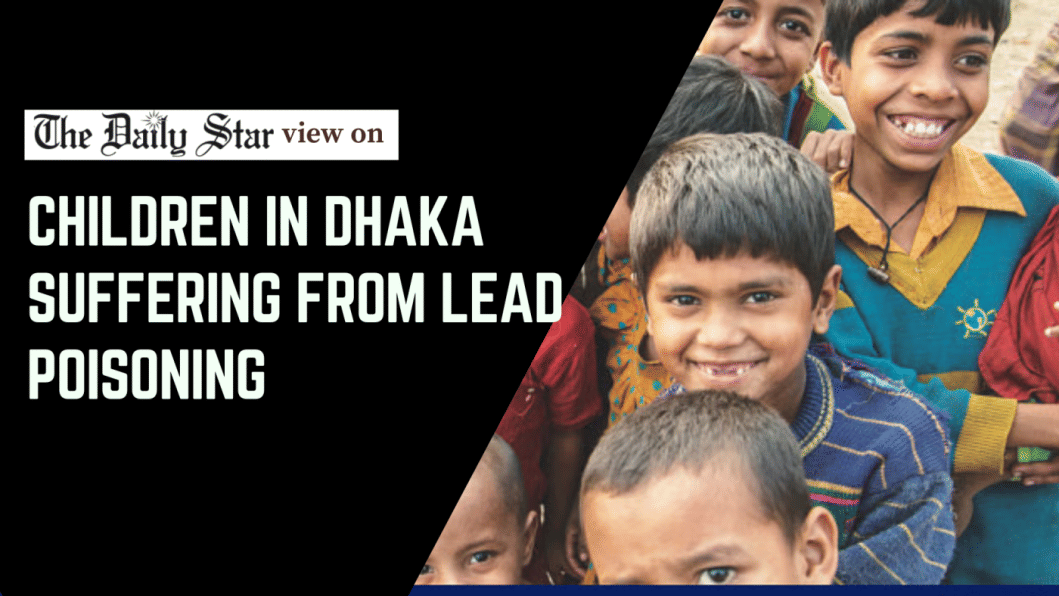A recent study conducted jointly by icddr,b and Stanford University has revealed alarming levels of lead contamination among children residing in Dhaka. The research, which focused on 500 children aged two to four years in the city, discovered that approximately 98 percent of them have elevated levels of this harmful heavy metal in their bloodstream. The primary factors contributing to these high blood lead levels (BLLs) are the close proximity to industrial areas, exposure to indoor second-hand smoke, elevated levels of lead-containing dust, and contact with household items such as cosmetics, cookware, and paint.
Lead exposure, as highlighted by the US Centers for Disease Control and Prevention (CDC), can have detrimental effects on a child’s development and overall health. It can lead to brain and nervous system damage, behavioral and learning difficulties, speech and hearing impairments, reduced IQ, and diminished attention span, among other health issues. The CDC considers BLLs exceeding 3.5 micrograms per deciliter worrying, particularly for young children, while the World Health Organization (WHO) emphasizes that there is no safe threshold for BLLs.
The study uncovered significantly higher BLLs in the examined children compared to acceptable levels. Notably, children in Dhaka South exhibited higher BLLs than their counterparts in the northern part of the city, mainly due to the prevalence of lead-emitting industries in the southern region. Children residing within a one-kilometer radius of battery production, recycling, or other lead-related facilities displayed BLLs 43 percent higher than those living farther away. These findings underscore the urgent need for action from relevant authorities, including the city corporations, to address this pressing public health concern.
Given that an estimated 3.6 million children are already impacted and many more are at risk, it is imperative to confront this issue without delay. The government must devise a comprehensive strategy to eradicate all sources of lead exposure, including lead-polluting industries and air pollution, not only in Dhaka but throughout the nation. It is crucial to prohibit the employment of children in high-risk environments with elevated lead exposure levels and enhance public awareness on this critical matter. These concerted efforts are essential to secure a healthy future for our children, enabling them to thrive and contribute meaningfully to the country’s advancement. The time for action is now.

